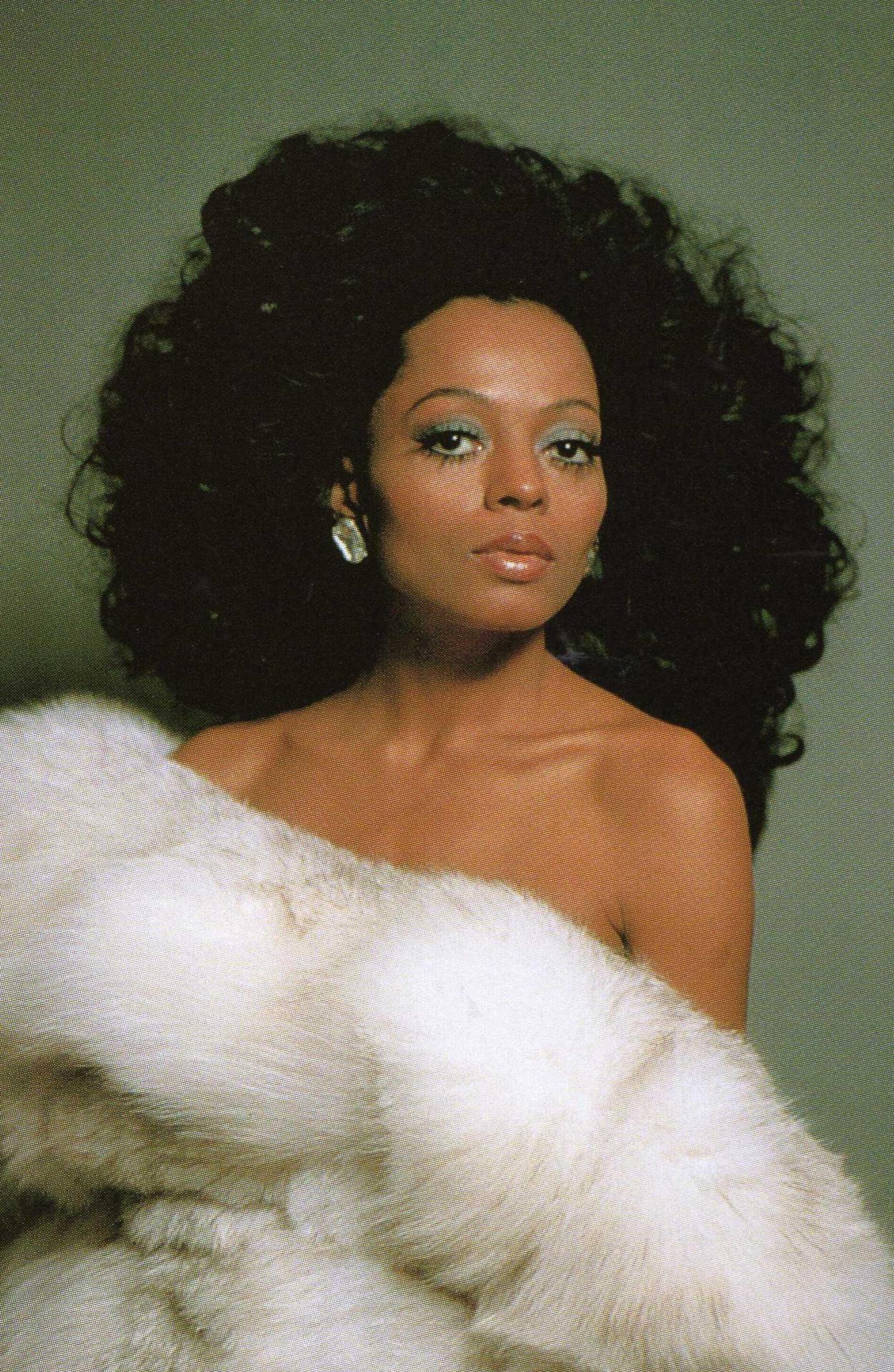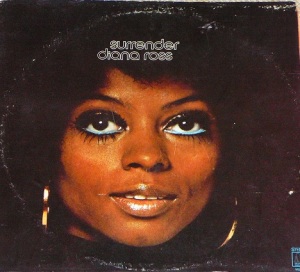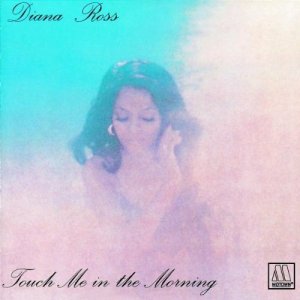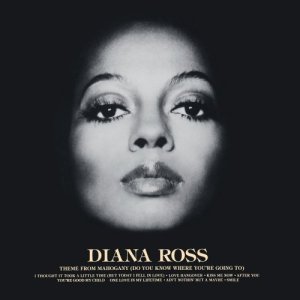
“What a feeling it is to know, you’re in my corner and you won’t let me go…”
It is so common these days for a group member to break out and release a solo album (think Michael Jackson…Bobby Brown…Beyonce…Justin Timberlake…Fergie…etc.) that it’s hard to imagine what a unique occurrence it was back in 1970, when Diana Ross finally left The Supremes and struck out on her own. In hindsight – with the knowledge of her subsequent six solo #1 hits, Oscar-nominated acting career, and critically-praised live performances – it seems like a no-brainer that Diana Ross would be a success. But back in 1970, as the lead singer of the most successful female trio and Motown group ever stepped onto the stage alone, it apparently wasn’t necessarily so. Diana herself has said that after nearly a decade of building a brand – The Supremes – she had no idea how people would respond to her as a solo artist: “The fear was, you know, Will I be okay? Will my records be hits? People had done some of the same things, and they weren’t successful” (David Nathan’s The Soulful Divas, 152).
Thus, the pressure of putting together her debut album had to be monumental. Had it been a failure, it would have been disastrous for both the record company and for Miss Ross and her future career. We know now that Motown paired the singer with a few producers, searching for the right combination. The album that ultimately made it to the shelves, however, was solely the work of Nick Ashford and Valerie Simpson (with the exception of one song ) – the songwriting/producing team responsible for Marvin Gaye and Tammi Terrell’s hits “Ain’t Nothing Like The Real Thing,” “Ain’t No Mountain High Enough,” and “You’re All I Need To Get By.”
This wasn’t the first time Diana Ross had worked with Ashford & Simpson. After ten #1 hits with producing team Holland-Dozier-Holland, the Supremes released the duo’s “Some Things You Never Get Used To.” The result was only a moderate hit for the group, and reportedly led to a scramble to come up with something more successful (on a personal note, “Some Things…” is one of my favorite Supremes songs; it’s far more complex than most of the singles released to that point, and features some of Diana’s most impressive vocals while with the group). Thus, it’s interesting that the company was willing to team up Ashford & Simpson with Diana Ross again, since their track record together wasn’t exactly sterling. But in the liner notes to the 2002 re-issue of the album, Ashford comments, “Berry told us that he wanted us to get a little bit away from the Motown sound.”
The result of that directive is an eleven-song album that, I think, is both a seamless continuation of and radical departure from Diana Ross’s career with The Supremes. It’s hard to compare this album with the final few Supremes offerings, as those weren’t truly recorded as albums – LPs like 1969’s “Cream Of The Crop” and “Let The Sunshine In” were basically collections of new recordings and older songs from the vaults, featuring a variety of background singers and producers. Still, Ashford & Simpson, over the course of these eleven songs, managed to retain the essence of latter-day-Supremes-Diana’s star persona while exploiting a new, exciting vulnerability in her vocal performances. If the goal of a debut album is to build a foundation upon which a long career can be built, Diana Ross is a textbook example.
***
1. Reach Out And Touch (Somebody’s Hand): The album’s first single and opener immediately sets the tone for the rest of the album. The instrumental track has none of the “grit” nor is there the vocal brassiness of the 1960s Motown recordings; it is remarkably smooth, especially when compared to the Gaye/Terrell recordings produced by Ashford & Simpson. The song is a blend of pop, soul, folk, and gospel – the same genres touched upon in the final Supremes single, “Someday We’ll Be Together” – but the relaxed, almost sleepy vocal of that song is replaced here by a far more active performance. The ad-libbing that begins at 2:24 is perhaps the most “loose” and unstructured singing Miss Ross had done in her career that far, at least in terms of released singles; her focus on singing clear, crisp melody lines with the Supremes has been completely thrown out the window at the end of the song here. Though not at all the strongest vocal nor the strongest song on the album, “Reach Out…” is still a good choice for single; its deceptively simple structure echoes the earliest of Diana’s Supremes recordings, while also offering a singer far more in command of her voice and interpretive craft.
2. Now That There’s You: The opening of this song is continued proof of Diana Ross’s growth as a singer; her vocal lags behind the instrumental in the first five beats of the song (“Now that there’s you…”) in a way that she had rarely deviated from it before. The result is that she seems far more mature and in command of the material. The song itself pushes the singer to the top of her register in the chorus, and again features strong ad-libbing in the final minute or so of the track – witness her explosive reading of the word “honey” at 2:49. There is a sense of freedom in her interpretation of the song that had only been hinted at in earlier work like “Love Child” – which I imagine is indicative of her enjoyment in working with Ashford & Simpson.
3. You’re All I Need To Get By: Ashford & Simpson reached into their back catalogue for this one, re-cutting their previous hit with a slow-burning, bluesy approach perfectly suited to the “less Motown” command from Berry Gordy. Instead of the driving, percussion-driven track of the original, the 1970 version features a hypnotic, repetitive bass-line and dreamy background vocals upon which Diana offers a passionate reading of the familiar lyrics. Again, the change in Diana Ross’s voice when compared to her earlier work from the 1960s is pretty stunning – she is far more soulful here than might be expected. Lots of Motown remakes (including many recorded by Diana Ross herself) lack the fire of the originals; this, however, is not one of those cases. While many Marvin Gaye fans will likely find some fault with this version of the song, it truly does stand on its own and is a perfect inclusion on the album, helping to bridge the gap of Diana’s legacy as the Queen of Motown with her future as a soloist.
4. These Things Will Keep Me Loving You: This is, perhaps, the toughest song to consider when looking at the album as a whole, being that it’s the only one not written by nor produced by Ashford & Simpson. Taken on its own terms, the song ( from the team of Johnny Bristol and Harvey Fuqua) is a bouncy piece of pop, similar in many ways to “Someday We’ll Be Together” which was written/produced by the same team and also featured the “sing-outs” by Bristol. The problem for me is that it doesn’t require nearly the effort to sing as the other songs on the album, and thus seems a bit dated in the context of the other recordings. Though she gives an appealingly subdued, husky performance, it does little to further the evolution of Diana Ross as an artist. Its inclusion was likely a “safety” mechanism by Berry Gordy, in case none of the other songs were hits. While it’s an enjoyable song and certainly worthy of an album release, it does feel a little superfluous, especially in terms of the song that follows.
5. Ain’t No Mountain High Enough: This, of course, is the album’s masterpiece. A Grammy-nominated #1 hit, it is such an immediately recognizable song that it also is tough to consider purely in the context of the album. Similar to “You’re All I Need To Get By,” this track is a remake of the earlier Marvin Gaye/Tammi Terrell hit – though to call it a remake is to completely underestimate its value. Ashford & Simpson took the basic idea of the melody and the lyrics and somehow turned the song into an episodic, almost operatic track that still defies genre classification (I mean, really…how do you describe this song?). Diana Ross had spoken on record before, notably in the hit “Love Is Here And Now You’re Gone” – but those melodramatic readings have been replaced by an almost chant-like recitation of lines — something totally new and instantly mesmerizing. The original album version of the song runs six minutes and 20 seconds (almost three times the length of the longest Supremes track!), giving Diana and the background chorus of voices plenty of time to build up to what is, I think, perhaps the most exciting musical climax in pop history. At 4:18, when the dreamy, string-laden bed of music erupts into the thunderous “Ain’t No Mountain High Enough” refrain, the Diana Ross that emerges is not only a singer unlike anything we’ve heard on any Supremes song; she’s also a completely different singer from anything we’re heard on this album. Her complete abandon for the duration of the song – not to mention the ad-libs which reach far higher than any notes she’d hit before – is a thrill and remains among the best vocal work she would ever produce. If released today, this is the kind of song that would sweep the Grammy awards; it is a mystery to me that it didn’t even win Diana Ross the ONE it was nominated for. Credit must also be given to the incredible musicians featured on the track; assuming Motown bassist James Jamerson is the man playing here, this has got to be among his best work; the bass-line services as the vital musical heartbeat and perfect counterpoint to the prominent strings featured throughout. This is truly one of the masterpieces of music from the 1970s or any other decade, and is easily the highlight of the album.
6. Something On My Mind: So how do you follow a masterpiece? You don’t try. You quiet things down and relax the atmosphere with a song like this one, an incredibly catchy composition that had already been recorded and released as a single by Rita Wright (aka Syreeta) in 1968 in a far more overwrought version than the one produced here. Had it not been outshined by “Ain’t No Mountain…” and “Reach Out…,” this one probably could have been a single for Ross, too – I have no doubt it would’ve garnered strong pop airplay. The vocal here is a nice mix of the simplistic clarity of many of her Supremes hits and the more forceful and passionate readings required by Ashford and Simpson.
7. I Wouldn’t Change The Man He Is: I have a feeling many fans will place this toward their top of the list in terms of vocal performances from this album; it certainly stands out, being one of the bluesiest songs ever recorded by Diana Ross, and showcasing her vocal range by requiring a low, breathy reading of the verses and plaintive belting on the chorus. It is, however, a little lower on my personal list. The subject matter of the song – a resignation that while her man isn’t perfect, he’s still the right one – requires a world-weariness that Diana never quite achieves on the nearly-spoken verses. It isn’t that Diana Ross isn’t capable of such an emotion (witness much of her work on the Lady Sings The Blues soundtrack) – but within the scope of this album, one filled with the excitement and freshness of an emerging artist, the idea of the singer as a slightly jaded woman never comes across as very believable. That said, there are moments of brilliance here; I love her sarcastic “huh” at 1:10 into the song.
8. Keep An Eye: Here is another highlight of the album, a soul gem that Diana Ross had earlier recorded with The Supremes for the Love Child album. More than anything, “Keep An Eye” is a showcase for Ashford & Simpson as songwriters; similar in theme to the great “Smiling Faces Sometimes” (a 1971 hit for The Undisputed Truth ), the lyrics here are playful but extremely dark (and include one of my favorite lines in a song ever: “Just like a snake on the limb of a tree, a friend is an enemy you can’t see”). Diana’s vocal is masterful; this is a song I always turn to when I need to combat the popular assumption that she was never a true “soul singer.”
9. Where There Was Darkness: A nice, mid-tempo number that features a memorable chorus and another passionate vocal from Diana, especially in the last 50 seconds or so. The strange instrumental track at least helps it stand out from the rest of the album – though I don’t think it could ever have been a single, it is a decent album track.
10. Can’t It Wait Until Tomorrow: Probably, for me, the weakest song on the album. Without a strong hook on either the verses or the chorus, it gets lost among the far superior songs that come before it (and which will follow). Though Diana Ross still sounds more engaged than on many of her final Supremes album-tracks, this tune lacks the vocal star-power exhibited on “Ain’t No Mountain…” or “Keep An Eye.” If any song could have been left off the album, this is probably it, although to be fair it is still better than many of the album tracks Diana would record over in the future…
11. Dark Side Of The World: And so we come to the end of the album, and Ashford & Simpson provide Miss Ross with another soul gem, one of the strongest of the entire work and one of the best true soul songs Diana would ever record. The instrumental track is outstanding – a Funk Brothers masterwork that could have easily fit into any of the albums Marvin Gaye would release during the decade (and indeed, Gaye did record this song, though it went unreleased). Diana’s plaintive reading of lyrics like “Bring back the sunshine that you took away” again shows just how far she’s come as a vocalist in just a few short years; contrast this with her girlish delivery of the similarly-themed “Come See About Me” and it’s hard to believe only six years separate the songs.
***
As I said before, it’s hard to consider this album purely on its own terms, knowing that it was only the beginning of a solo career filled with some spectacular high points. But as a singular work by a “new” artist, it really is extremely strong from start to finish. Motown had rarely put much care into albums, instead focusing on churning out hit singles throughout the 1960s. That changed in the 1970s, and I’d argue this album is one of the first from Motown to really make a complete artistic statement. Diana Ross is never placed in the same category as 1970s albums by Marvin Gaye and Stevie Wonder – mainly because Diana Ross didn’t write or produce the music herself – but it’s ever bit as effective in terms of telling a complete musical story. That narrative involves a singer learning to use her voice in a new, exciting way to tell much more complex stories.
Final Analysis: 4.5/5 (A Sky “High” Debut)
Choice Cuts: “Ain’t No Mountain High Enough,” “Dark Side Of The World,” “Keep An Eye”
https://dianarossproject.wordpress.com/2012/01/02/diana-ross-1970/
 New topic
New topic Printable
Printable
 Report post to moderator
Report post to moderator

























